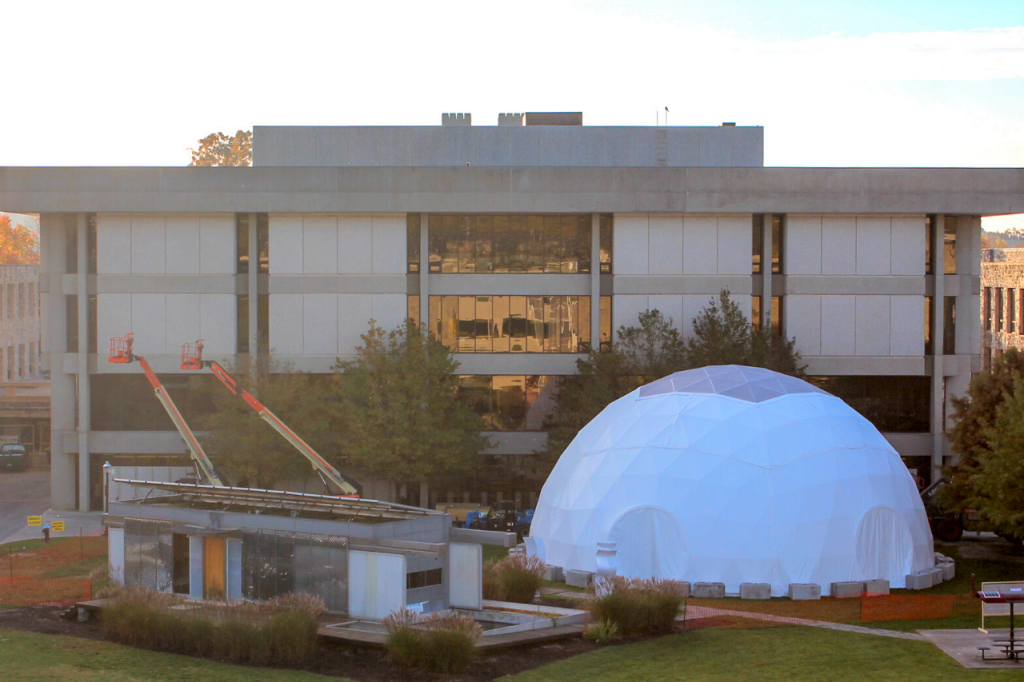
The skyline of Virginia Tech’s north campus has experienced a dramatic change recently – and it happened in less than 48 hours.
Standing out in stark contrast to the familiar façade of Cowgill Hall, a bright white, 2,900-square-foot geodesic dome now bridges the gap to Bishop-Favrao Hall and adds a futuristic aura to its Hokie Stone surroundings. As part of the College of Architecture and Urban Studies’ COVID-19 action plan, the dome will provide additional space to host faculty teaching, student pin-ups and small gatherings into the spring 2021 semester.
The structure will not only serve as a temporary substitute for several instructional rooms in Cowgill that now house socially-distanced studio desks, but it will also be open to students and faculty across the college who are looking for flexible space solutions.
“We’re at a crucial moment because of COVID-19,” said Enric Ruiz- Geli, a professor of practice in the architecture program who also serves as the college’s director of space. “We want to show how architecture and design – in combination with our focus on experiential learning – can be driving forces in this fight. The dome not only provides a temporary solution to a big space issue, but it’s also a learning opportunity for students across the college.”
The dome’s many pieces and materials arrived on campus in late October, and the structure was assembled in just a few days thanks in part to the help of a professional team from manufacturer Pacific Domes. The university’s Division of Campus Planning, Infrastructure, and Facilities took over from there, installing the floors and providing lights and electricity.
In addition to these amenities, the dome also boasts a large skylight that brings in natural brightness as well as heat. Air circulation is provided by several fans around the structure’s exterior and three large openings, allowing for cross ventilation. Similar to other tents on campus, the openness of the structure serves as its primary temperature and humidity control.
The dome’s polyhedral design also means it will be able to withstand very heavy loads for its relative size including any snow or ice accumulation during the winter months.
“Basically, students will get the benefit of being outdoors, but they’ll also be protected from the elements,” said Ruiz-Geli, adding the dome can host up to 25 people with proper social distancing.
Students will also realize other benefits from the structure, including the opportunity to make improvements like designing skins for its exterior made of new materials or perhaps adding graphics to the existing white vinyl skin.
The change of scenery doesn’t hurt, either, said architecture student Hannah Elias. “Being in the dome really makes you rethink your work because you’re seeing it in a different light and from different angles,” she said. “It’s interesting to see how my work is changing based on how the space is changing.”
For Elias and other students enrolled in studio courses, the dome also provides a welcome venue for both formal and informal discussions about their projects.
“Especially in architecture, the soul of our major is being able to work with people,” she said. “I thrive on being able to interact with others and have those constant critiques. This new space is refreshing for everyone.”



